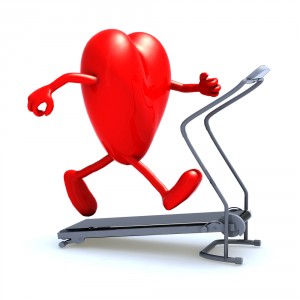Posted on November 24, 2016 by Jenny Cromack
Exercise is a main determinant of cardiac events. This means a massive misconception is that exercise is only good for preventing cardiac events, but, less commonly known is that after a cardiac event exercise can still be completed regularly. Not only that, but exercise plays a key role in the prevention of a secondary event from occurring. This blog looks at the benefits of exercise after a cardiac event and how you should get back into exercising in a safe and effective manner.
Unfortunately if you want to exercise after a cardiac event, there are a few ‘absolute contra-indications’, contra-indications are individual condition that means the exercise cannot be safely participated in, in this case there are other physical activities that can be done.
Absolute Contra-indications
- Unstable angina
- Unstable diabetes
- Uncompensated heart failure
- Resting Systolic Blood Pressure >180mmHg or resting Diastolic Blood Pressure >100mmHg
- Uncontrolled tachycardia >100bpm (fast heart rate)
- Symptomatic hypotension (low blood pressure)
- Febrile illness
Many patients who recover from a cardiac event, are uneasy about doing physical activity due to fear of the repercussions. Published statistics can be very useful, but should always be approached with caution because they can easily be misquoted, misrepresented or over-sensationalised – especially in the mass media. This can lead to confusion, panic and fear, especially among those who are not expert in the field in question. In this case however I believe they can show how effective and safe exercise is for cardiac patients can be.
Medical studies conducted by the American Heart Association (AHA, 2012) reported that the risk of an event happening in patients completing moderate intensity exercise is 1 in 129 456 hours of exercise and 1 in 23 182 hours for high intensity exercise – pretty safe!
The following exercise prescription is meant for patients that are in what is called ‘phase 4’ of recovery after a cardiac event which can be as soon as 4 weeks post event in young and fit patients or can 6 months for older higher-risk patients. Following the FITT (Frequency, Intensity, Type and Time) principle will clearly show what exercise can be performed by patients.
- Aerobic Frequency – Exercise should be performed 3 or more times a week, but preferably on most days.
- Intensity- this can be determined using several different methods, the simplest of which is 11-16 on the RPE scale of 6-20.
- Type- aerobic exercise should include rhythmic, large muscle group activities with an emphasis on increased caloric expenditure for maintenance of a healthy body weight and its many other associated health benefits. Ideally the activity will include the upper and lower extremities.
- Time- Warm-up and cool-down activities of 5–10 min, including static stretching. The end goal is get patient working for 20-60 minutes per day, although patients may begin with as little as 5-10 minutes of exercise. Gradually progressions can be made, increasing time by 10-20% each week.
Hopefully this blog shows how to still exercise effectively after a cardiac event


